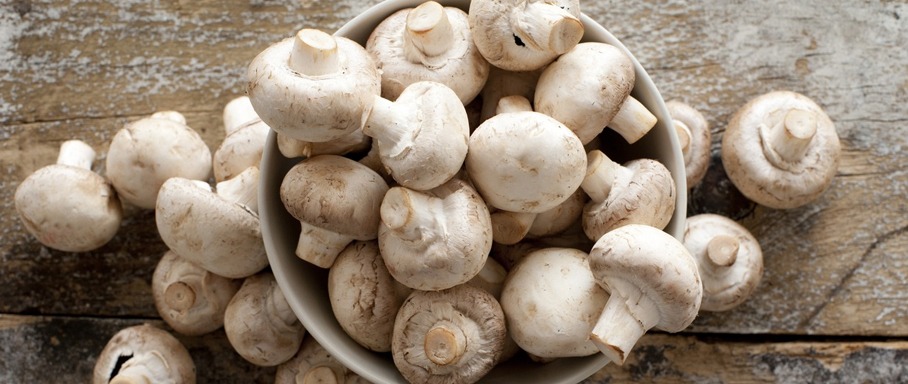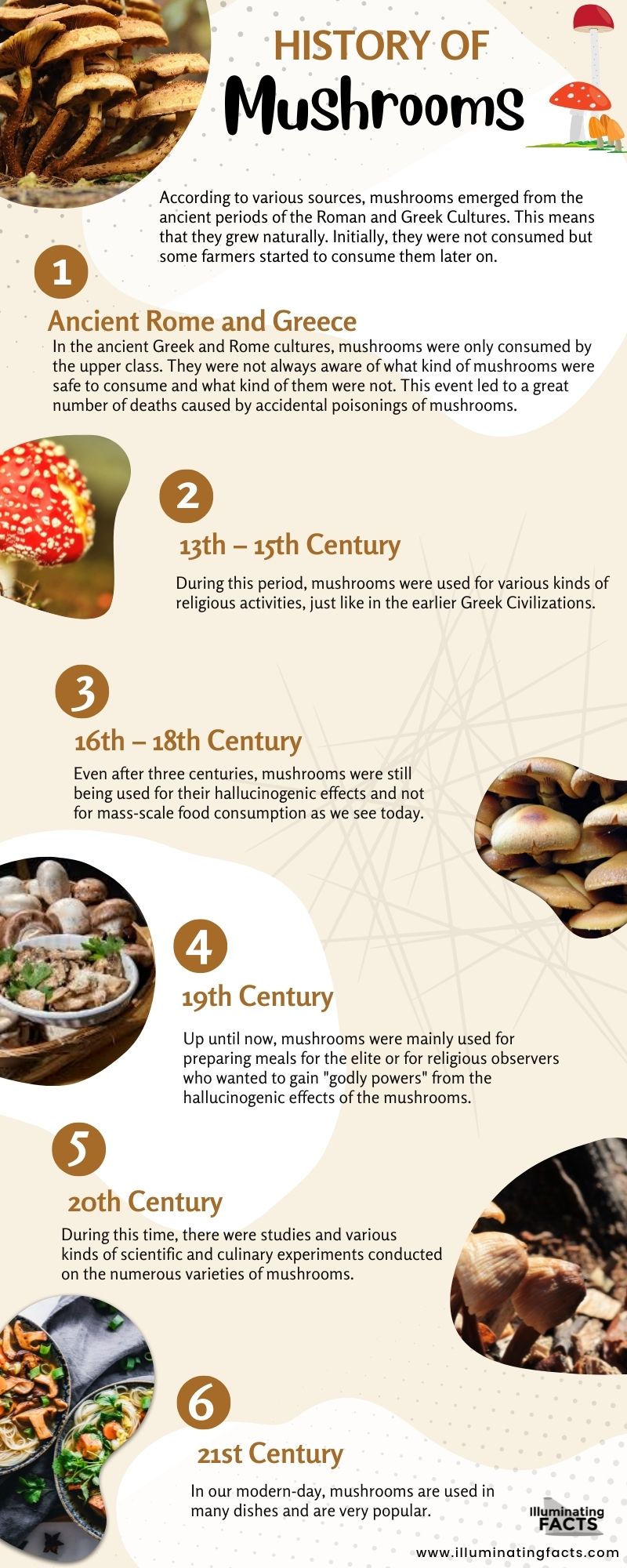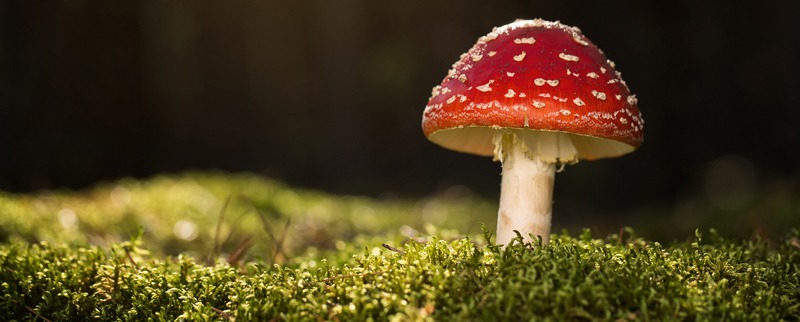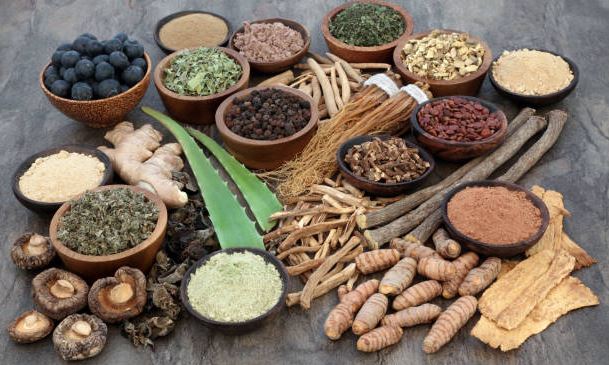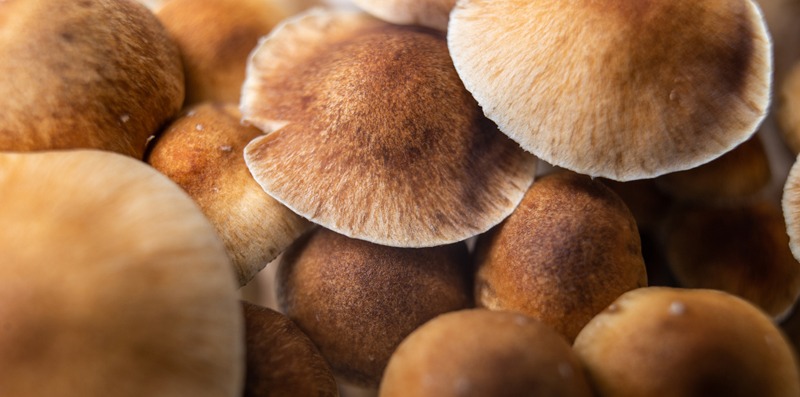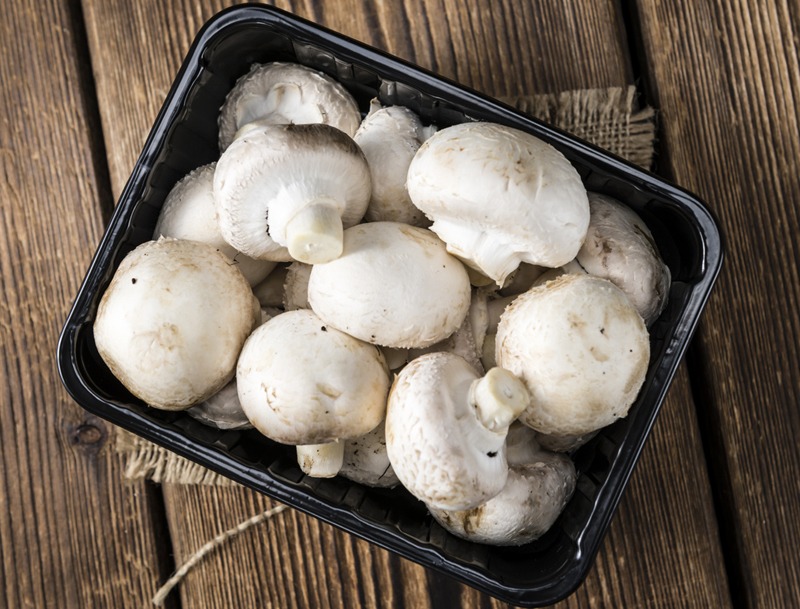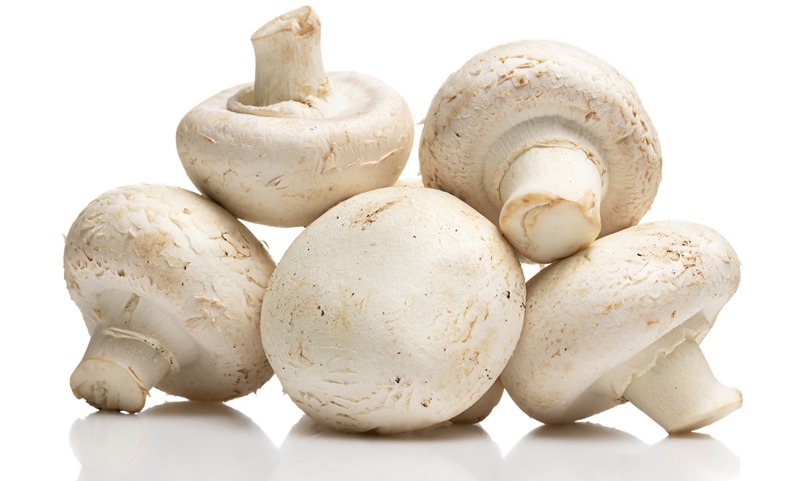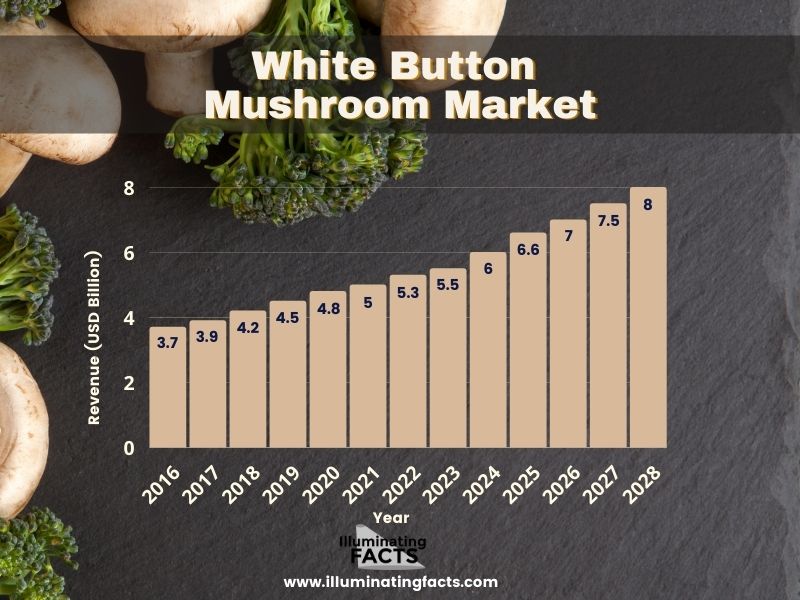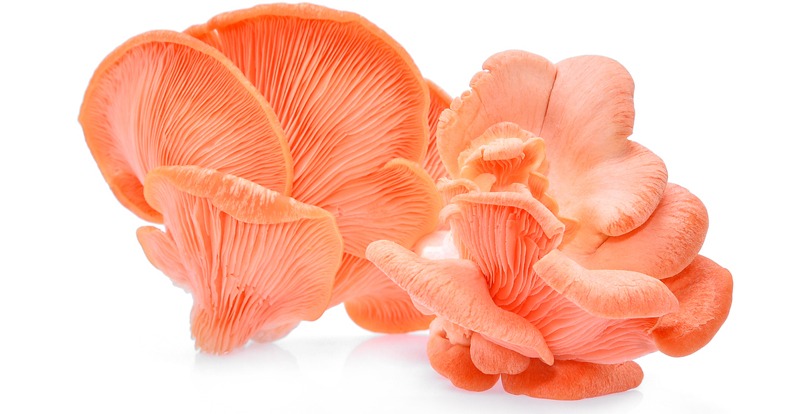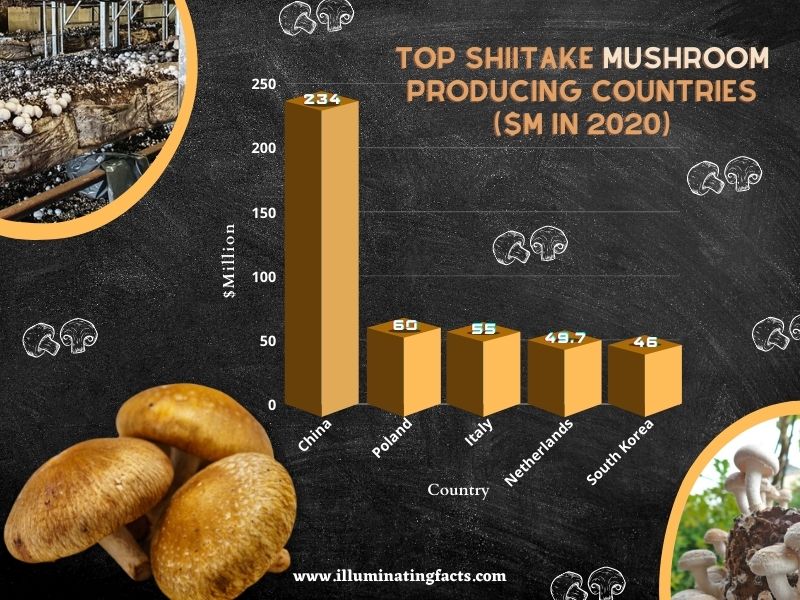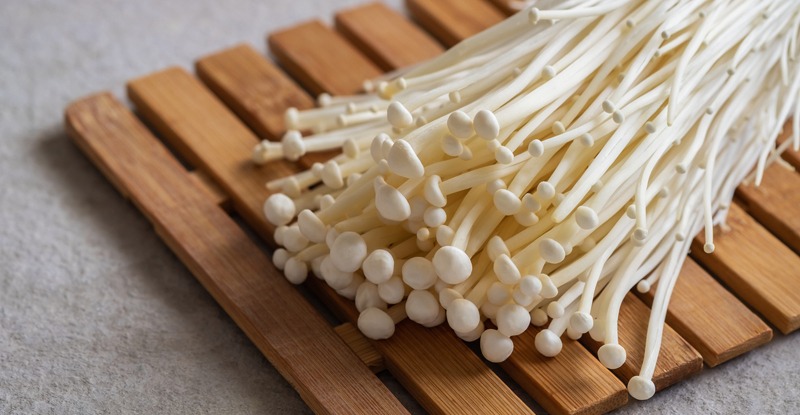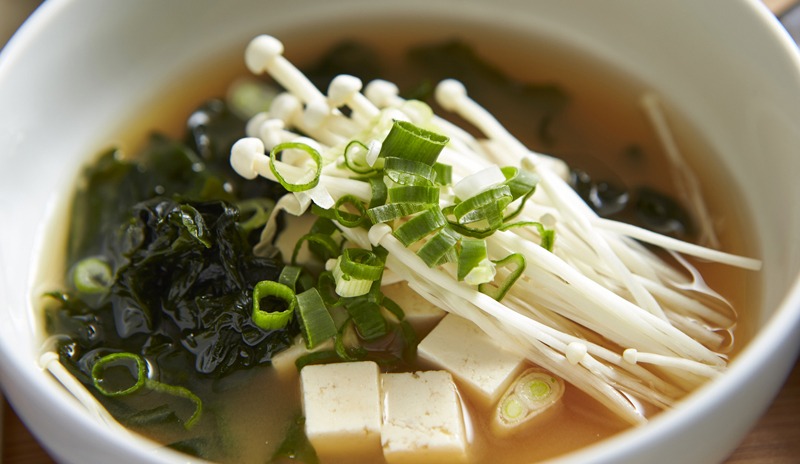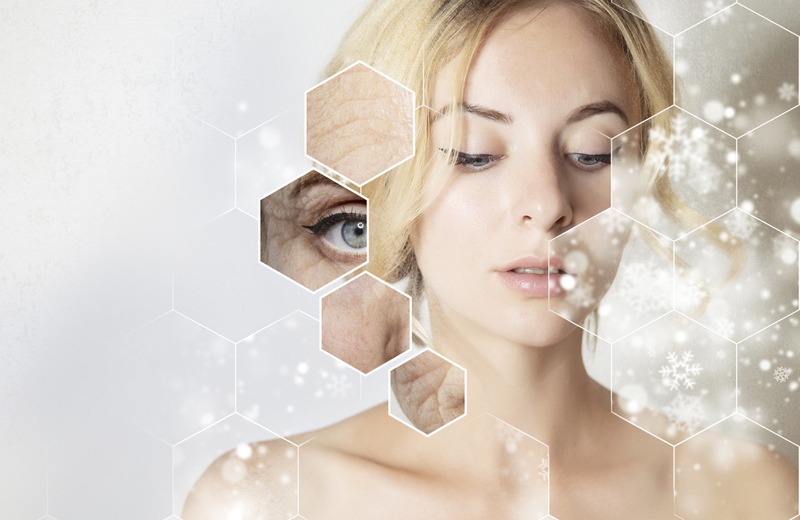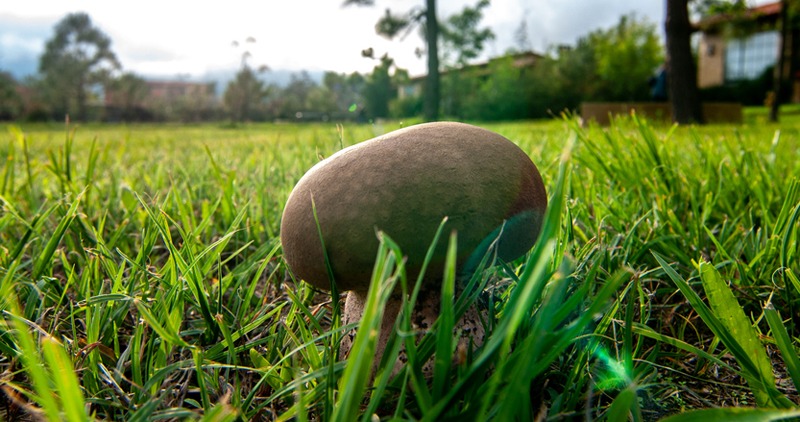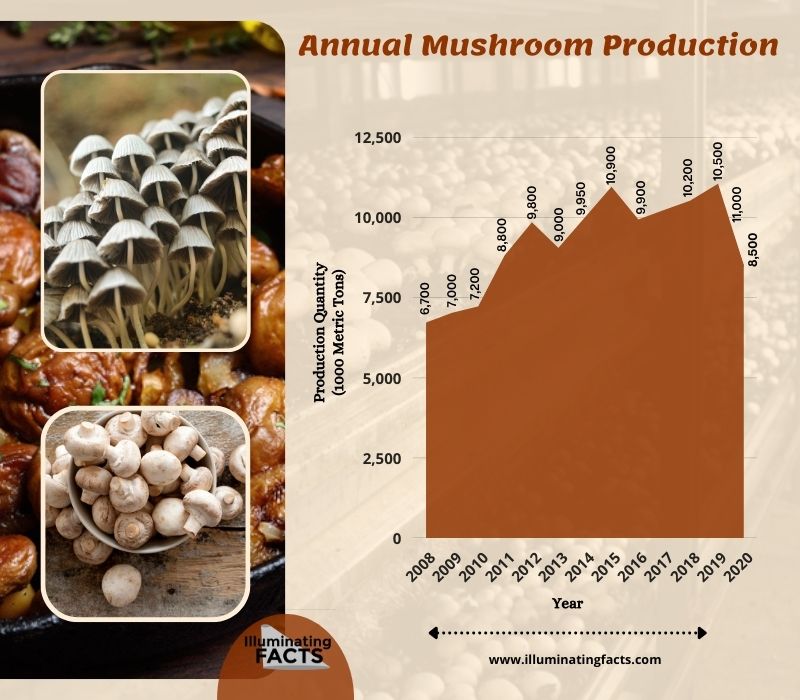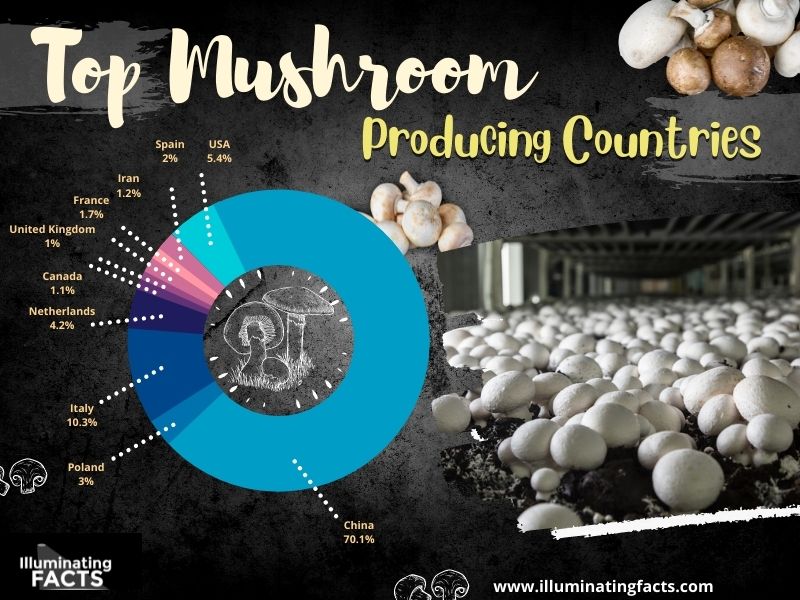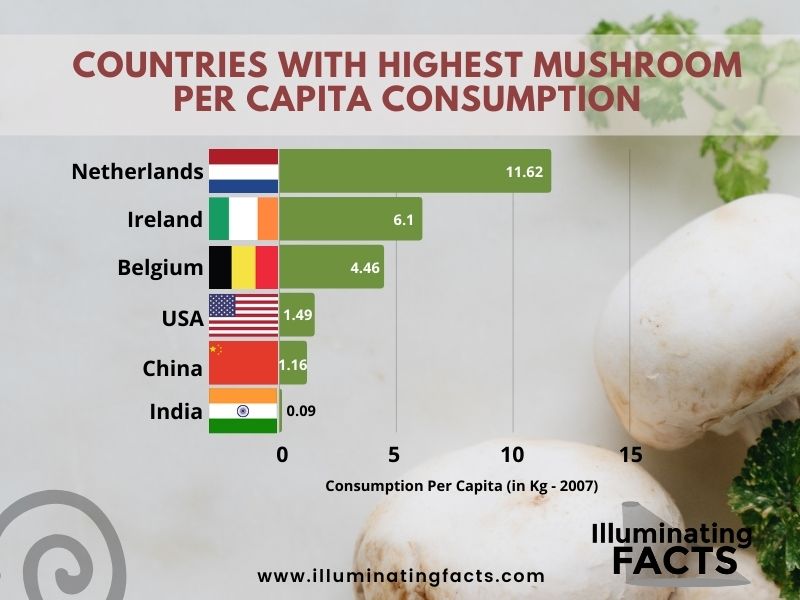Mushrooms are one of the most desirable food toppings. They are used on pizzas and a wide variety of salads as well. Many people love mushroom soups as well. With a wide variety of mushrooms, there is always something new you can try out. Yet, mushrooms aren’t always a good thing for human health. This amazing plant food has a lot of mysteries behind it that you may not know.
History of Mushrooms
According to various sources, mushrooms emerged from the ancient periods in the Roman and Greek Cultures. Some species have been found in archaeological sites which suggest that edible mushrooms existed about 13,000 years old as well. However, there was no evidence found that they were cultivated back then. This means that they grew naturally. Initially, they were not consumed but some farmers started to consume them later on [22].
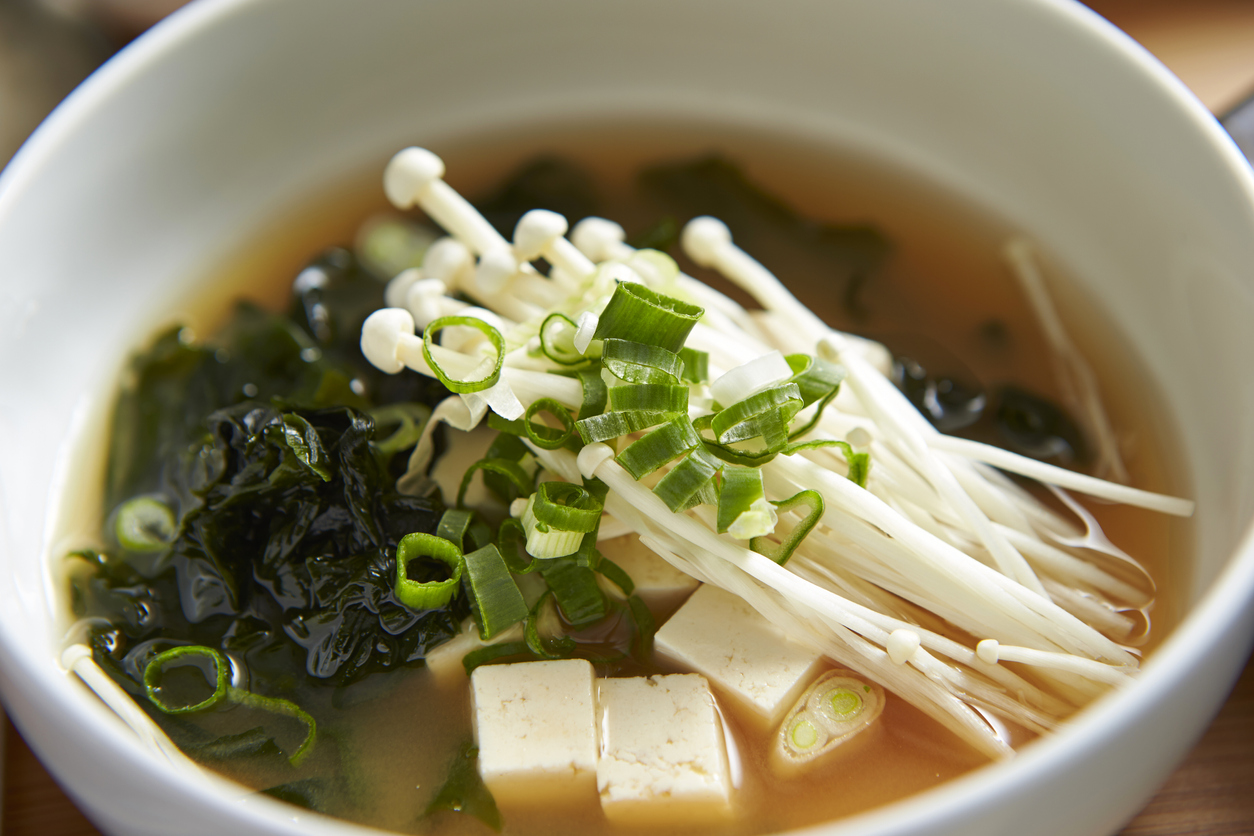
Cooked Shiitake Mushrooms

Different types of mushrooms
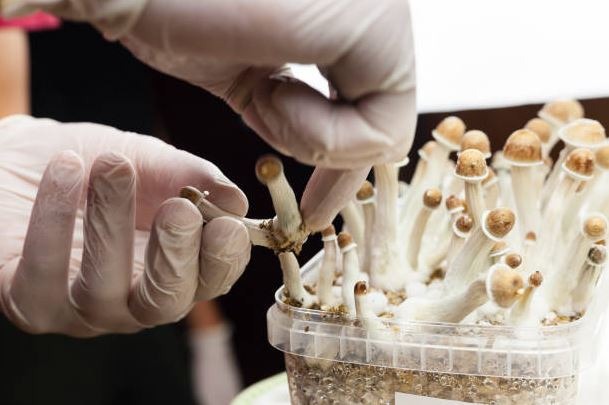
Mushrooms with medicinal properties

Mushroom pizza
There are a few other sources that tell us that mushrooms have been in use by humans for a long time. Ötzi is known as the oldest natural human mummy in Europe. The body is currently on display in the South Tyrol Museum of Italy. The mummy of Ötzi is considered significant towards the mushrooms because his body was found with two varieties of mushrooms. According to expert archaeologists, Ötzi lived during the time of 3350 and 3105 BC. These two Polymer Mushrooms included Birch Fungus and Tinder Fungus. Historians believe that Birch Fungus was used for medicinal purposes while Tinder Fungus was probably used as a part of a fire lighting kit.
The Era of Ancient Rome and Greece
We can infer that people during this time had a good knowledge about mushrooms which is why they mummified the body with two varieties of mushrooms. It also explains that mushrooms were of holy significance in the past. Archaeologists have also discovered that the mushrooms cultivated in China were particularly grown to gain medicinal benefits from them. In the ancient Greek and Rome cultures, mushrooms were only consumed by the upper class.
However, the ancient Greek and Rome cultures were not always aware of what kind of mushrooms were safe to consume and what kinds were not. This even led to a great number of deaths caused by accidental poisonings from mushrooms. According to the French philosopher, Voltaire, a dish of mushrooms changed the entire fate of Europe. While this may seem like a casual line, it turned out to be quite true. This is because the Roman Emperor King Charles VI died after consuming poisonous mushrooms. As all kinds of mushrooms were not safe to eat, Roman emperors later hired special food tasters who used to test different types of mushrooms to evaluate their edibility[1].
The Era of 13th – 15th Century
During this period, mushrooms were used for various kinds of religious activities, just like in the earlier Greek Civilizations. There were several types of poisonous as well as non-poisonous mushrooms which were used in these religious events. Historians believe that Siberian Shamans Vikings used to consume “fly agaric” mushrooms. The intoxicating effects of these mushrooms include euphoria, hallucinations, drowsiness, muscle jerks, and chances of getting a high fever. Since these mushrooms were bringing odd effects to the mind, they were considered to have given the religious observers some “Godly Powers” as well [2].
From the 13th Century to the 15th Century, Mexicans also used mushrooms in various religious processions and ceremonies. Particularly, all those forms of mushrooms were consumed which gave some hallucinogenic effects to the natives. The effects usually started within 30 minutes of consumption and got intense within 2 to 2.5 hours. The Catholic priests in Rome also used to invite people to consume the hallucinogenic mushrooms in 1519. At that time, it was considered magic but as science progressed, there were several other findings on psilocybin and psilocin, two of the main elements in some mushrooms which may cause hallucinogenic effects [7].
The Era of 16th – 18th Century
Even after three centuries, mushrooms were still being used for their hallucinogenic effects and not for mass-scale food consumption as we see today. The Spanish and Portuguese citizens started consuming the mushrooms and faced intoxicated mind effects. The convulsions and odd behaviors were considered communications with the devil. In central Mexico, the mushrooms were considered sacred items that would allow communication with their gods. Piltzintecuhtli was known as the “God of Magic Mushrooms and Hallucinogens” [3].
The Era of the 19th Century
Up until now, mushrooms were mainly used for preparing meals for the elite or for religious observers who wanted to gain “godly powers” from the hallucinogenic effects of the mushrooms. However, in the 19th century, the French were among the first ones who started to use mushrooms in different types of cuisine, primarily, haute cuisine. During this era, France was already getting popular because of their foods and the usage of mushrooms just added more to it. By the 19th century, the world started recognizing the fact that mushrooms were not only poisonous or had hallucinating effects rather they were something that could be used in meals. [7]
America was among the first countries to follow the French and many American dishes were now being prepared with mushrooms in them. Besides, the Americans took the mushroom obsession to the next level as many kinds of clubs opened up where different varieties of mushrooms were offered to the buyers. People could identify and even cook the various varieties of mushrooms as they wanted.
The Era of the 20th Century
The world was on its way to advancement and peak knowledge. During this time, there were studies and various kinds of scientific and culinary experiments conducted on the numerous varieties of mushrooms. The study of mushrooms, Ethnomycology, also started in this era and many people started to uncover more about mushrooms and their potential uses. In 1957, American banker Robert Gordon gave his best efforts towards the study of mushrooms and publicizing them. From that point, the study of fungus became very popular in different parts of the world. His works were not only published in journals but he was also featured in various magazines such as Life Magazine.
Richard Evans was also among the first ones who introduced Ethnomycology and persuaded others to have an interest in this field as well. Many other researchers namely Terence McKenna, Carl Ruck, John W. Allen, and Paul Stamets, also joined to investigate more on the probable uses, benefits, and side effects of different types of mushrooms.

The Era of the 21st Century
In the modern-day, we see mushrooms to be used in quite many dishes. The most popular one is Pizza where mushrooms act as a major topping and this industry has led to higher cultivation of various mushrooms. Besides, mushrooms are also used when cooking Pasta. In a wide variety of French and Spanish cuisines, mushrooms are also used in soups.
In recent times, they have also become a major part of the pharmaceutical industry where they are being used for numerous health benefits. They are known as the “Medicinal Fungi.” Since they are used in controlled environments, they can help prepare drugs and medication used to treat psychiatric issues. There are several popular antibiotics such as Penicillin and Cephalosporins that are developed using fungi. Several medications for cancer, cholesterol problems, and ergosterol synthesis have been created with mushrooms.
Many research centers and microbiology labs are researching more on mushrooms and finding the various harmful effects as well as the benefits [14]. With the advancement in science and technology, things have gotten a lot easier for the researchers which is why the studies are going at a rapid pace. There is absolute clarity on the edible and non-edible mushrooms now which is why mushrooms are being sold publicly in stores as well. In fact, you can get them from Amazon.com.
Types of Mushrooms Consumed Today
White Button Mushrooms
The most famous type of mushrooms used in the majority of the dishes is White Button Mushrooms. The scientific name for these mushrooms is “Agaricus Bisporus”. However, people often confuse these mushrooms because they have many names and that is mainly because of how mature they are. They are one of the most grown mushrooms as they account for 90% of the mushrooms sold all over the world. They are grown in more than 70 countries [10].
Let’s talk about some scientific facts about white button mushrooms. The Kingdom from which they belong is called Fungi while the division is “Basidiomycota”. The class of these mushrooms is Agaricomycetes and the order is Agaricales. They belong to the Agaricaceae family with the genus of Agaricus.
Although they are one of the most popular mushrooms today, the White Button Mushrooms have a weird history about them. In 1871, Botanist Mordecai Cubitt Cooke wrote about this mushroom as “Variety of Agaricus Campestris.” After an analysis by Danish mycologist Jakob Emanuel Lange, it became known as “Psalliota hortensis var bispora” in 1926. When this didn’t seem enough, this fungus was raised at a standard of species and called “Psalliota bispora.” However, further research proved that the mushrooms were of a different species which is why they were renamed “Agaricus Bisporus” in 1946 [10].
If the mushrooms are fully mature, they will be named Portobello Mushrooms and the cap would measure about 4 to 6 inches. In case, the mushroom is not mature and appears brownish, it would be called Italian Brown Mushrooms or Swiss Brown Mushrooms.
The White Button Mushrooms are grey-brown in color and have flat scales on them as well. The background appears quite pale. The shape is like a hemisphere. White Button Mushrooms are usually between 2 to 4 inches in diameter and have narrow necks which are 2.5 inches in height and 0.5 inches in width. Sometimes, they may also grow thicker. Moreover, the flesh of White Button Mushrooms is pale pink upon bruising while the spore print is usually in a darker shade of brown but could get lighter too. Spores are oval and quite small as well [10].
One should keep in mind that White Button Mushrooms require a warmly mild temperature to grow which is 70F or 21C. If you are planning to grow some mushrooms, you can do it by getting a mushroom kit.
White Button Mushroom Market (USD Billion)
Figure 1: Data by – Zion Market Research [17]
White Button Mushrooms are definitely the most famous mushrooms all over the world. From the graphs, it can be seen that there has been a static rise in the global White Button Mushroom market. The positive graph shows that in the future, the White Button Mushroom market will grow even further. In 2016, it was $3.8 billion while in 2027, the global revenue is expected to double. The 100% growth in the mushroom market indicates that this can be one of the best opportunities for entrepreneurs.
Nutritional Value of White Button Mushrooms Per 100 Grams | |
Energy | 22 KiloCalories |
Carbohydrates | 3.26 grams |
Protein | 3.09 grams |
Fat | 0.34 grams |
Water | 92.45 grams |
Vitamin B6 | 8% of Daily Intake Value |
Vitamin C | 3% of Daily Intake Value |
Phosphorus | 86 milligrams - 12% of Daily Intake Value |
Potassium | 318 milligrams - 7% of Daily Intake Value |
Riboflavin | 0.402 milligrams - 34% of Daily Intake Value |
Niacin | 3.6 milligrams - 24% of Daily Intake Value |
Pantothenic Acid | 1.497 milligrams - 30% of Daily Intake Value |
Oyster Mushrooms
Although White Button Mushrooms are quite popular all over the world, Oyster Mushrooms are no less. They are consumed in many countries and are known as Oyster Mushrooms because of their unique shape and design. They resemble fresh-shucked oysters and are usually found to be growing on wood that is decaying. Oyster Mushrooms smell like aniseed and benzaldehyde which gives them a sweet and bitter aroma at the same time. The best part about Oyster Mushrooms is that they are safe for human consumption as well. However, food is not the only industry where Oyster Mushrooms are used. They have a wide range of medical applications as well as being used in the making of various leather products as well.
The scientific name for Oyster Mushrooms is “Pleurotus Ostreatus.” They belong to the Fungi Kingdom with the division being Basidiomycota. The class and order are Agaricomycetes and Agaricales, respectively. They belong to the family of Pleurotaceae while the genus is Pleurotus from where they have gotten their scientific name as well.
There are multiple types of Oyster Mushrooms with some of them being wild and some of them being edible. The most popular variety is known as Pearl Oyster Mushrooms which are mostly sold in parts of North America. Besides, there are Blue Oyster Mushrooms as well which aren’t exactly blue but do have a slight shade of bluish-gray which has got them their name. However, the distinctive form of Oyster Mushrooms is Golden Oyster Mushrooms which have a shocking yellowish golden color. Pink Oyster Mushrooms also exist but they lose their color as they are cooked and tend to have a majorly woody taste and aroma. Phoenix Oysters are also a variety of mushrooms and they can be differentiated by their longer stems and smaller caps. Lastly, there is also King Oyster Mushrooms which are not only the largest but also the meatiest among all [16].
The several uses of Oyster Mushrooms include food products. They are mainly used in preparing a number of Japanese, Korean, and Chinese dishes. One can use them in a salad or in soups. They would also taste great with a number of sauces. In fact, there are several sauces made out of Oyster Mushrooms too. If you are cooking stew, use Oyster Mushrooms as they will enhance the taste and the overall aroma of the dish as well. Besides the food market, Oyster Mushrooms are also used to treat soil that has been exploited with diesel. Items such as mycelium furniture and mycelium bricks are also created with Oyster Mushrooms being a primary content.
As for the description of an Oyster Mushroom, it is generally an oyster-shaped cap that could be anywhere between 0.75 inches to 11.75 inches depending upon the type of the mushroom. The color would also vary accordingly. The spores on the mushrooms are in lilac-gray color while the gills also present a creamy texture.
Nutritional Value of Oyster Mushrooms Per 100 Grams | |
Energy | 33 KiloCalories |
Carbohydrates | 6.09 grams |
Protein | 3.31 grams |
Fat | 0.41 grams |
Dietary Fiber | 2.3 grams |
Vitamin B6 | 8% of Daily Intake Value |
Vitamin C | 3% of Daily Intake Value |
Phosphorus | 120 milligrams |
Potassium | 420 milligrams - 9.2% of Daily Intake Value |
Riboflavin | 0.35 milligrams - 29.6% of Daily Intake Value |
Niacin | 4.96 milligrams - 33% of Daily Intake Value |
Pantothenic Acid | 1.29 milligrams - 24% of Daily Intake Value |
Shiitake Mushroom
Another form of edible mushroom is the Shiitake Mushroom. Unlike the ones mentioned above, the Shiitake Mushrooms are usually grown in East Asian countries and used over here particularly. The Shiitake Mushrooms are known to be discovered in 1209 in China. The mushroom got its name from the Japanese language where “Shii” means dead logs and “take” means mushrooms. The Shiitake Mushrooms usually grow on Oakwood and Chestnut wood. Due to their increased commercial use, there are now many farms where Shiitake Mushrooms are grown in controlled environments.
Scientifically, they belong to the Basidiomycota division in the Fungi kingdom. Their class is Agaricomycetes while the order is Agaricales. The family from which they belong is Omphalocele while the Genus is Lentinula which has also given them their scientific name, Lentinula Edodes.

Figure 2: Data by: Tridge [18]
Shiitake Mushrooms are one of the most famous ones but they are mostly grown in China. In fact, they are mostly used in Chinese dishes only. Since China is one of the largest countries in terms of land, there is high shiitake mushroom production at about $234 million as of the latest trends. Moreover, the Chinese companies have seen a massive demand for Shiitake Mushrooms abroad in countries like the UK, USA, and the Netherlands. As a result of this, they are going to increase production even further soon. Other countries like Poland, Italy, the Netherlands, and South Korea, even when combined, do not make as much revenue as does China alone.
Nutritional Value of Shiitake Mushrooms Per 100 Grams | |
Energy | 34 KiloCalories |
Carbohydrates | 6.8 grams |
Protein | 2.2 grams |
Fat | 0.5 grams |
Water | 90% |
Vitamin B6 | 0.29 milligrams - 22% of Daily Intake Value |
Vitamin C | 3.5 milligrams - 4% of Daily Intake Value |
Phosphorus | 112 milligrams - 16% of Daily Intake Value |
Potassium | 304 milligrams - 6% of Daily Intake Value |
Riboflavin | 0.35 milligrams - 29.6% of Daily Intake Value |
Zinc | 1 milligram - 11% of Daily Intake Value |
Niacin | 3.88 milligrams - 26% of Daily Intake Value |
Pantothenic Acid | 1.5 milligrams - 30% of Daily Intake Value |
Enoki Mushrooms
The last variety of edible mushrooms is the Enoki Mushroom. These mushrooms have emerged from Japan and are used in various Japanese cuisines as well. Unlike the other mushrooms, Enoki Mushrooms grow in mildly colder conditions as they can be sourced between the months of September to March. This is one reason why Enoki Mushrooms are also called “Winter Fungus.”
From a scientific aspect, they belong to the Basidiomycota division in the Fungi Kingdom. Their class and order are Agaricomycetes and Agaricales respectively. They belong to a unique family which is the Physalacriaceae. The genus of these mushrooms is Flammulina while the species from which has also gotten them their scientific name, Flammulina Velutipes.
As far as the description of Enoki Mushrooms is concerned, they have a white color mainly because they have not been exposed to light. However, if they are wild (non-edible), then they will be having a dark brown color. There are several factors that distinguish the Enoki Mushrooms from the other mushrooms, one of which is the fact that they require a carbon dioxide-rich environment. Besides, they have long thin stems as well if they are edible and short thick stems if they are wild. The mushroom caps can be anywhere between 0.5 inches to 2 inches while the stalks are 1 to 3 inches. You can easily identify them from their shiny caps [9].
You can find plenty of Enoki Mushrooms in the markets as they are available in both, canned and fresh forms. Enoki Mushrooms also have an American variety called the F. velutipes var. Lupinicola.
Nutritional Value of Enoki Mushrooms Per 100 Grams | |
Energy | 37 KiloCalories |
Carbohydrates | 6.96 grams |
Protein | 2.7 grams |
Fat | 0.41 grams |
Sodium | 3 milligrams |
Vitamin B1 | 0.225 milligrams - 19% of Daily Intake Value |
Iron | 1.09 milligrams - 6% of Daily Intake Value |
Potassium | 368 milligrams - 8% of Daily Intake Value |
Riboflavin | 0.2 milligrams - 19.6% of Daily Intake Value |
Zinc | 1 milligram - 11% of Daily Intake Value |
Niacin | 7.0 milligrams - 51% of Daily Intake Value |
Sodium | 3 milligrams |
All About the Different Types of Mushrooms
Benefits of Mushrooms
Despite being a fungus, edible mushrooms have several vitamins and minerals that can result in improved health. Mushrooms are beneficial in numerous ways provided below.
Improvement in the Immune System
One of the biggest concerns any person should have with their body is whether or not they have a strong immune system. This is because the immune system is essentially responsible for tackling different types of infections and germs that could be causing problems to the body. Mushrooms have high anti-inflammatory properties which strengthen the immune system and help it gain speed to defeat all the foreign bodies attacking the human body. People who will regularly consume mushrooms will be more prone to serious diseases and medical concerns. However, beyond a certain limit, you should not be consuming mushrooms as they can have an adverse impact [5].
Major Source of Vitamin B
People who suffer from a deficiency of Vitamin B often end up buying capsules to fulfill the requirement. Although this may seem like a good idea, nothing is better than going completely organic. Research has proven that almost all mushrooms contain different types of Vitamin B such as Vitamin B1, B6, and B5. These essential vitamins help in improving the skin as well as the nervous and digestive systems of the human body. Overall, the combination of three types of Vitamin B is also healthy for the heart [6].
High Content of Antioxidants
Mushrooms are rich in antioxidants, all of them. As a result, it helps in protection against several serious medical concerns such as heart problems and cancer. People who think they are aging fast should be actively consuming mushrooms as they will help protect them against free radicals as well as improve their skin health too. Mushrooms are also considered to be the best source of selenium, one of the best-known antioxidants for the human body [6].
Help in Losing Weight
Mushrooms may not have any direct connection with weight loss but it surely does have with your diet which could result in loss of weight. In most dishes where mushrooms are used, they are replaced with meats such as beef. A dish may have 60% meat and 40% of mushrooms in it. As a result of this, the high-fat content in meat is avoided while the essential vitamins and minerals are gained via mushrooms. Therefore, as you will be consuming lower meat, there would be lower fat consumption as well leading to weight loss.
Controlled Blood Pressure
Many people often face the issue of high blood pressure and this may be due to several factors. Often, people take medicines to control their blood pressure and avoid the development of any kind of heart problem. However, if you want to do this organically, mushrooms would be a great choice. As mentioned above, all the mushrooms are rich in Potassium, it helps in lowering the blood flow rate and improves heart health as well [5].
Drawbacks of Over-Consuming Mushrooms
Fatigue
Mushrooms are said to make you feel enervated. Many people experience discomfort, and restlessness after consuming mushrooms. In some cases, it also makes a person sleepier after consumption. It is recommended to avoid a daily intake of mushrooms to save yourself from their adverse effects.
Stomach Issues
People have felt that eating mushrooms in large amounts causes stomach aches. Moreover, if the mushrooms that have been consumed are poisonous, the person might even die. Hallucinogenic mushrooms can also lead to severe diarrhea and in some cases, mostly teenagers, vomiting, nausea, cramps, drowsiness, and bloating are also experienced. Not only this but it is seen that mushrooms can cause kidney failure leading to death.
If someone around you experiences any of these symptoms, take them to a doctor right away. If you recognize the mushroom as being poisonous, make them throw up immediately [4].
Headache
Another side effect of mushrooms is that they give you headaches, although the issue is minor. People have recorded experiencing headaches for more than 24 hours after consumption. Headaches are also considered to be one of the symptoms of mushroom poisoning. It is better to record your intake of mushrooms, and not to eat them on a daily basis. Always make sure the mushrooms you are consuming are safe. This isn’t a problem with store-bought mushrooms, but when foraging for mushrooms, it is best to do a spore print to identify a mushroom. A lot of mushrooms share the same appearance [15].
Anxiety
Anxiety isn’t a common symptom but there are instances where it has been recorded in excessive mushroom eaters. It depends on the body, and the sensitivity of the person too. The anxiety level could range from mild to extreme, due to the contribution of other issues too. Larger servings of mushrooms can make anxiety worse. It is recommended to cut down on mushrooms if you feel any of these symptoms.
Mental Problems
One of the most serious disadvantages of mushrooms is mental illnesses. These can be caused if a person consumes mushrooms in a high amount due to addiction, or other causes. Some of the illnesses include panic disorders and mood swings [4].
Pregnancy
Raw mushrooms are extremely dangerous for new mothers or pregnant women. They could cause cancer, which can affect the fetus. They grow on the surface of other plants and fungi, although edible. Raw mushrooms are indigestible and so they are cooked properly. Not only this but, some mushrooms like the magic mushrooms are also threatening to women. Poisonous mushrooms affect a fetus and can cause deformations in a child. It is suggested to avoid mushrooms during any stage of pregnancy, or nursing.
Odd Sensations
Some people have reported feeling a particular tingling sensation in their whole body, 30 minutes after eating mushrooms. They feel odd excitement and happiness for a period. After a while, this feeling of excitement and happiness leads to depression and anxiety.
Dizziness
Overconsumption of mushrooms can lead to dizziness. A common cause of this is mushroom poisoning. Even breathing in the spores of poisonous mushrooms can lead to dizziness, and sweating. Poisonous mushrooms can increase our heartbeat, blood pressure, and body temperature. These symptoms are temporary, however, it is better to visit a doctor if you know you have consumed a deadly mushroom.
People that take high doses of mushrooms are likely to appear confused and lose focus. If the blood pressure of the person decreases, a person can even lose consciousness [4].
Gas
Mushrooms can cause gas because they are difficult to digest due to their cells and sugars. The small intestine fails to fully digest these mushrooms, thus causing gas. However, in the large intestine, it experiences fermentation and leaves the body as intestinal gas. This is another disadvantage of mushrooms and is a reason why it is important to limit the intake of mushrooms.
Allergies
Allergies are caused by harmful and toxic mushrooms that have adverse effects on consumers. The symptoms depend on the type, and amount of mushrooms consumed. The earliest, and most common symptoms are uneasiness and sweating. Mushroom allergies are caused when the body recognizes the mushroom particles as invaders into the body and attacks them. Histamine is a chemical that is released during the digestion of mushrooms and triggers an allergic reaction.
Only the inhalation of mushroom spores can lead to a runny rose, sneezing, and watery eyes. These spores inflame the respiratory tract causing these symptoms. Some people experience extreme skin allergies with symptoms like rashes, irritations, and swelling of lips and throat. If mushrooms are taken in an excessive amount, you can suffer from nosebleeds, and a dry nose and throat. Swelling of the throat can also make you short of breath.
Ataxia
Magic mushrooms can also cause ataxia. Ataxia is the lack of coordination between muscles. This affects even voluntary basic movements such as walking. Ataxia can cause problems during swallowing, eye movement, and much more.
Hallucinations
Mushrooms containing psilocybin cause hallucinations. Dried mushrooms can contain about 0.5% psilocin. However, these vary greatly between different types of mushrooms. After consumption of these mushrooms, people lose the sense of reality and cannot comprehend their surroundings. Consumers in some cases also experience memory loss. It is advised to not drive while under the influence of these chemicals. Hire a driver, or book a car if you experience these hallucinations after consuming a lot of mushrooms.
Hallucinogenic mushrooms can cause flashbacks without warning. These flashbacks can last for months. These symptoms can reach their peak after about 40 minutes after consumption. So it is better to partake in mushrooms in a moderate amount. Hallucinogens are banned in many places and their use results in fines. The sale, and serving of hallucinogenic mushrooms, in shops and restaurants, is illegal in the United States.
Mushrooms in Numbers
Annual Mushroom Production
Source: Data By: Research Gate [19]
Over the past few years, there has been a significant increase in the production of mushrooms. In 2008, the production was around 7,000,000 metric tons which increased to 10,000,000 metric tons in 2017. Following the year 2017, there has been an average growth of 4 – 5% per annum in the production of mushrooms. As a result of this, the current production quantity has increased to 12,000,000 metric tons and is constantly increasing.
Top Mushroom Producing Countries
Source: Data by: AtlasBig [20]
Although mushrooms are produced all over the world, there are certain countries that have a significant mushroom production. Over the past few years, China has emerged as the biggest producer and even exporter of mushrooms. Over 70% of the global mushroom production is done in China with numerous varieties. Followed by China is Italy and then the USA which contributes 10.3% and 5.4% of global mushroom production, respectively [11].
Source: Data by: Research Gate [21]
Although the production of mushrooms may be higher in some countries and not in others, the consumption chart shows differences. China is the country that is the largest producer of mushrooms but it comes in 5th place when talking about per capita consumption. This is because most of what China produces is exported and not readily made available to the locals. Countries like the Netherlands and Ireland have high mushroom consumption mainly because they produce locally as well as import mushrooms from countries like China and the USA.
Top 20 Interesting Facts about Mushrooms
-
- There is a separate “Registry of Mushrooms in Works of Art” because mushrooms are considered to be one of the most significant subjects for artists all over the world.
- Mushrooms can neither be categorized as fruit nor as a vegetable. They can be simply referred to as plants or fungi.
- Mushrooms can cheaply solve the global food crisis. They don’t require a lot of input to grow but provide numerous vitamins and minerals as well as calories to fulfill the daily food intake.
- 75 different species of mushrooms glow in the dark due to the phenomenon of bioluminescence.
- There is a mushroom known as “Chicken of the Woods” namely, Laetiporus. This specific mushroom got its name by the fact that it tastes like fried chicken [13].
- The largest mushroom on Earth is the “Honey Mushroom” in the USA which covers almost 2200 acres. It is 2400 years old and has been killing off trees in the surroundings.
- Some mushrooms grow in particular seasons only such as the Alba White Mushrooms. This is why their yield is quite low and they may cost thousands of dollars.
- White Button Mushrooms have three varieties within the same mushrooms. Portobello and White Mushrooms are the two other ones but all three of them have different levels of maturity.
- In the United States, 4 pounds of mushrooms per capita are consumed every year.
- The Death Cap Mushroom is supposedly known for its good taste but it is also known for killing a person right away. It is one of the deadliest mushrooms on the planet.
- Studies have suggested that there are over 2 million species of fungi that could exist. However, as of now, only 80,000 of them have been fully discovered.
- Ancient Roman societies used to consider mushrooms as “food of the gods.”
- A mushroom’s DNA is more similar to a human than to any other plant or animal. This makes mushrooms one of the most suspicious living organisms.
- Mushrooms have been known to be used in Chinese medicines for thousands of years.
- Sometimes, even the non-edible mushrooms may have an appearance quite close to the edible mushrooms. One must be careful especially when growing them in the backyard.
- Mushrooms have been used as a pigment for dyeing fabric in earlier times.
- October 15th is considered National Mushroom Day. However, September is considered National Mushroom Month.
- A particular kind of mushroom, the Fly Agaric Mushroom, looks like the Super Mario Bros mushrooms. Interestingly, both of them do the same job – the illusion of objects appearing in a modified size than their actual size [12].
- A 3.3lb white truffle mushroom sold for over $330,000.
- One naturally occurring mushroom is called the “fairy ring.” It got this name mainly because the mushroom forms the outline in a perfect circular shape. This also seems to be quite an odd phenomenon as to how perfection in the form of a circle is achieved every time.
Conclusion
Mushrooms surely have a lot for food lovers as they are used in a variety of dishes such as Pizza and other Italian foods. However, with many varieties being poisonous, one should always be careful about that. We hope that the above-provided information has helped answer all your mushroom queries and given you a wide perspective on these unique organisms.
References
-
- Capasso, L., 1999. Laxatives and the Ice Man. The Lancet, 353(9156), p.926. Retrieved from https://www.thelancet.com/journals/lancet/article/PIIS0140-6736(05)75033-9/fulltext
- Bertelsen, Cynthia D. (2013) Mushroom: A Global History. Reaktion Books, London, UK. Retrieved from http://www.reaktionbooks.co.uk/display.asp?K=9781780231754
- Canada, Health (January 12, 2012). “Magic mushrooms – Canada.ca”. www.canada.ca. Archived from the original on December 22, 2017. Retrieved from https://web.archive.org/web/20171222051237/https://www.canada.ca/en/health-canada/services/substance-abuse/controlled-illegal-drugs/magic-mushrooms.html
- Choudhary, T., 2017. 10 Uncover Side Effects Of Mushrooms On Your Health. [online] StyleCraze. Available at: https://www.stylecraze.com/articles/serious-side-effects-of-mushrooms-on-your-health [Accessed 26 October 2021].
- Health Benefits of Mushrooms. (2021). Retrieved 26 October 2021, from https://www.webmd.com/diet/health-benefits-mushrooms#1
- Are Mushrooms Good for You?. (2021). Retrieved 26 October 2021, from https://www.healthline.com/health/food-nutrition/are-mushrooms-good-for-you
- History of mushroom cultivation. (2021). Retrieved 26 October 2021, from https://www.lowimpact.org/infoarticle/history-of-mushroom-cultivation/#:~:text=Mushrooms%20were%20thought%20to%20be,the%20food%20of%20the%20gods.
- World’s top Mushroom and Truffle Producing Countries. (2021). Retrieved 26 October 2021, from https://www.atlasbig.com/en-us/countries-mushroom-truffle-production
- Enoki Mushrooms. (2021). Retrieved 26 October 2021, from https://specialtyproduce.com/produce/Enoki_Mushrooms_704.php#:~:text=The%20variety%20was%20first%20cultivated,%2C%20North%20America%2C%20and%20Australia.
- “Portabella”. Fresh Mushrooms. Mushroom Council. n.d. Retrieved 29 February 2020.Retrieved from https://www.mushroomcouncil.com/varieties/portabella/
- Singh, M., Kamal, S., & Sharma, V. (2021). Status and trends in world mushroom production-III-World Production of Different Mushroom Species in 21st Century. Mushroom Research, 29(2), 75. doi: 10.36036/mr.29.2.2020.113703
- Mushroom Fun Facts. (2021). Retrieved 26 October 2021, from https://mobile-cuisine.com/did-you-know/mushroom-fun-facts/
- Interesting facts about mushrooms | Just Fun Facts. (2021). Retrieved 26 October 2021, from http://justfunfacts.com/interesting-facts-about-mushrooms/
- Benefits of Mushroom And Its Side Effects | Lybrate. (2021). Retrieved 26 October 2021, from https://www.lybrate.com/topic/benefits-of-mushroom-and-its-side-effects
- Mushrooms: Nutritional value and health benefits. (2021). Retrieved 26 October 2021, from https://www.medicalnewstoday.com/articles/278858
- All About Oyster Mushrooms | History, Origin, and More | Myco Supply. (2021). Retrieved 26 October 2021, from https://mycosupply.com/oyster-mushrooms-historically-delicious-consistently-beautiful-easy-to-grow/
- ZION Market Research. (2021). Button Mushroom Market – Global Industry Analysis. Retrieved from https://www.zionmarketresearch.com/report/button-mushroom-market
- Tridge. (2021). Shiitake Mushrooms – Country Wise Analysis. Retrieved from https://www.tridge.com/intelligences/shiitake-mushroom/production
- Kumla, J., 2021. Data of Global Mushroom Production. [online] Research Gate. Retrieved from: https://www.researchgate.net/figure/Data-of-global-mushroom-production-during-2004-2018-from-FAOSTAT-56_fig2_342285847 [Accessed 4 November 2021].
- World’s top Mushroom and Truffle Producing Countries. (2021). Retrieved 4 November 2021, from https://www.atlasbig.com/en-us/countries-mushroom-truffle-production
- Production and Marketing of Mushrooms: Global and National Scenario. (2017). Retrieved 4 November 2021, from https://www.researchgate.net/figure/World-mushroom-export-and-import-million-tons_fig1_235951347
- Jordan P. (2006). Field Guide to Edible Mushrooms of Britain and Europe. New Holland Publishers. p. 10. ISBN 978-1-84537-419-8.

